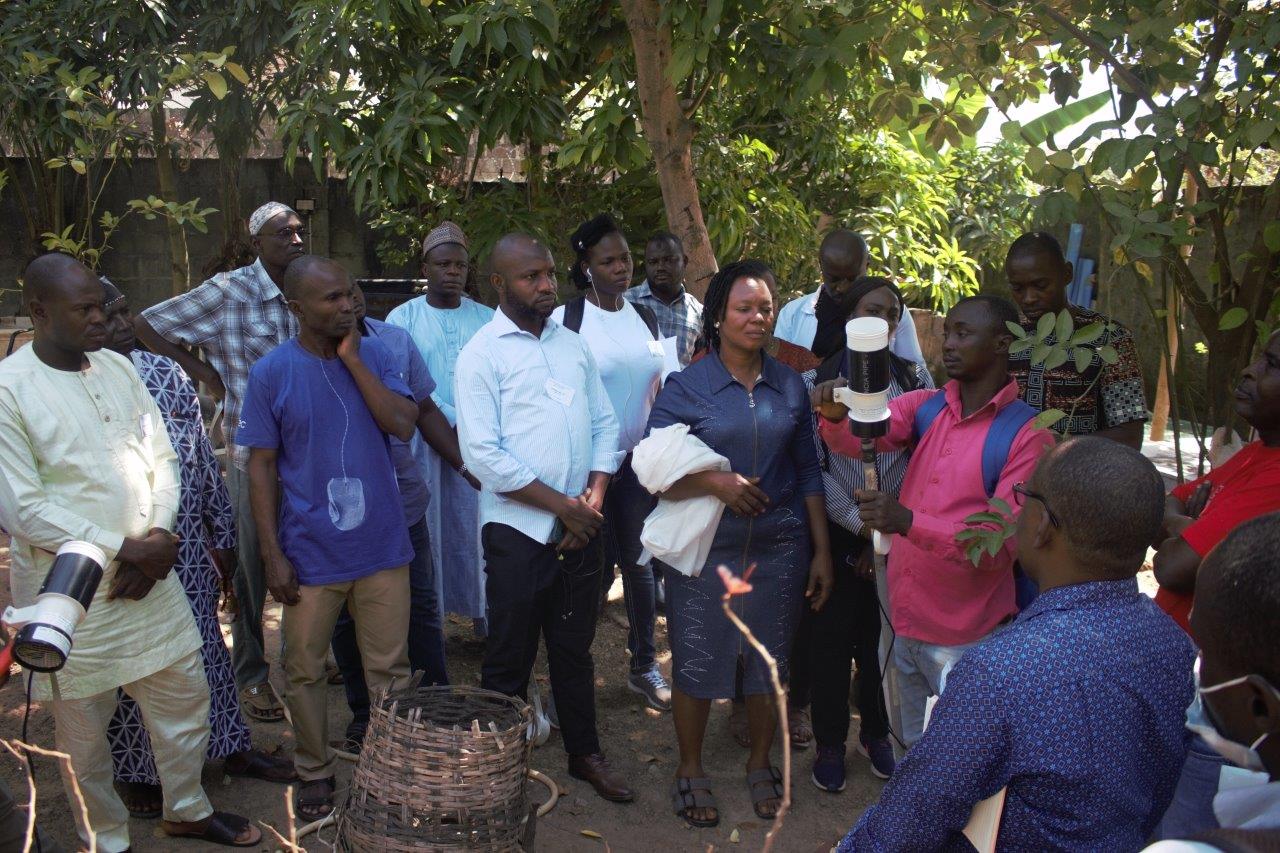
Dr. Auwal Al-Hassan, a professor and entomologist at Abubakar Tafawa Balewa University in Nigeria, spends his days teaching and researching insects that transmit disease and how to control them. His latest area of research focuses on the invasive malaria-transmitting mosquito Anopheles stephensi. To better understand and address the threat that this mosquito could bring to Nigeria, Dr. Al-Hassan attended trainings supported by the U.S. President’s Malaria Initiative (PMI) VectorLink Project.
“This mosquito has the potential to impede the progress already made in the fight against malaria due to its resistance to commonly used insecticides and its varying behavior compared to other mosquitoes we see here,” says Dr. Al-Hassan.
Anopheles stephensi was first detected in Biliri Local Government Area, Gombe State, Nigeria in 2020, by researchers at Gombe State University working in collaboration with the Nigeria Institute of Medical Research and the National Malaria Elimination Program (NMEP). It is widely recognized as an effective vector of malaria, particularly in urban and semi-urban areas, and its presence in Nigeria is a major concern for malaria control efforts in the country, which already accounts for over a quarter of the global malaria cases.

The PMI VectorLink Nigeria team is supporting the NMEP to strengthen its capacity to monitor the potential spread of this invasive mosquito species. In November 2022, the project successfully trained seven principal investigators and 14 entomology technicians selected from universities and research institutes across seven at-risk states in the country, including Dr. Al-Hassan, to strengthen their expertise in surveillance and identification of An. stephensi.
The training covered the preferred habitats of An. stephensi, which is key to detecting and understanding how to control its spread. “Adults prefer urban environments while larvae are commonly found to exploit several larval habitat types including human-made water containers such as plastic tanks, cisterns, discarded tires and plastic containers,” shared Dr. Al-Hassan.

PMI VectorLink Ethiopia Technical Manager Dr. Meshesha Balkew, who has been involved in An. stephensi surveillance and control efforts in Ethiopia, participated virtually in this training and shared best practices with the participants on identifying the breeding and resting sites of this species as well as how to identify adult An. stephensi mosquitoes.

A few weeks later, Dr. Al-Hassan traveled to Ethiopia to learn more from Dr. Balkew and the PMI VectorLink Ethiopia team about their experience with An. stephensi. This training reinforced what he learned in Nigeria, but also delved into one of the main control strategies for An. stephensi: larval source management (LSM).
“For the control of [this mosquito], larval stages are targeted mostly. This is because the preferred habitats for the adults are difficult to locate and [they] seem to have resistance to multiple insecticide classes, posing potential challenges to its control,” shared Dr. Al-Hassan. Therefore, LSM—where a chemical, called a larvicide, is applied to water in containers in order to kill the mosquito in its immature stage—has the potential to help control An. stephensi and mitigate disease impacts.
With a well-trained team now in place, the next step is to intensify surveillance and identification of An. stephensi throughout the country. Ultimately, Nigeria’s NMEP will decide what approach it will use to combat An. stephensi, but data collected by researchers like Dr. Al-Hassan is key to informing that approach. As he says, “Data collected will help [the NMEP] use resources optimally, prioritizing key activities in order to achieve effective and sustainable control of An. stephensi in our environments.”

